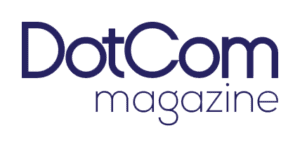Understanding AI in the social media platforms is no longer optional—it’s vital. With billions of users worldwide, platforms like Facebook, Instagram, TikTok, Twitter, and LinkedIn are becoming increasingly dependent on AI for user engagement, content moderation, ad targeting, and analytics. Whether you’re a digital marketer, developer, brand strategist, or casual user, knowing how AI in the social media platforms is transforming the way we connect and communicate can give you a competitive edge. From algorithmic timelines to sentiment analysis and chatbot automation, the influence of AI in the social media platforms is vast, dynamic, and accelerating.
1. AI Powers Personalized Content Curation
One of the most powerful and visible uses of AI in social media is the way it curates and delivers personalized content. AI algorithms analyze user behavior, preferences, engagement patterns, and social connections to determine what shows up on your feed.
For instance, Facebook’s News Feed algorithm, Instagram’s Explore tab, and TikTok’s “For You” page are all driven by machine learning models that predict what content you are most likely to enjoy. These models evaluate millions of signals in real time, ensuring that each user’s experience is unique and continuously optimized. This personalization has drastically increased user engagement and time spent on platforms.
2. AI Enables Advanced Ad Targeting and Optimization
AI in the social media platforms has revolutionized digital advertising. Advertisers no longer rely on basic demographic data alone; instead, they use AI-powered insights to target users based on interests, behaviors, purchase intent, and even emotional response.
Platforms like Facebook and LinkedIn use machine learning to predict which ads are most likely to resonate with each user. Dynamic creative optimization (DCO) allows the system to automatically adjust visuals, headlines, and calls-to-action to maximize ad performance. These AI systems continually test and learn from campaign data, ensuring that marketing spend is more efficient and impactful than ever before.
3. AI Is Central to Content Moderation and Safety
With millions of posts, comments, images, and videos uploaded daily, AI plays a critical role in content moderation. It helps identify and remove hate speech, misinformation, spam, and other violations of community standards.
YouTube’s Content ID system, Facebook’s DeepText, and TikTok’s AI moderation tools all use natural language processing (NLP) and computer vision to scan and evaluate user-generated content. These systems are trained to detect language nuances, facial expressions, symbols, and even video manipulation. While not perfect, AI significantly reduces the response time in flagging inappropriate content, keeping platforms safer for users.
4. Chatbots and Virtual Assistants Enhance User Engagement
AI-powered chatbots have become a standard feature for business pages on social media. These bots answer customer inquiries, take orders, schedule appointments, and provide 24/7 service—all without human intervention.
Facebook Messenger, WhatsApp Business, and Instagram DMs support AI chatbots that use NLP to understand and respond to queries conversationally. This not only enhances the customer experience but also allows brands to automate workflows, scale support operations, and gather valuable insights into customer needs and behavior.
5. AI Improves Social Listening and Sentiment Analysis
Social listening refers to the practice of monitoring digital conversations to understand what customers are saying about a brand or topic. AI enables this by scanning vast amounts of unstructured data—posts, comments, hashtags, emojis—and analyzing sentiment in real time.
Tools like Brandwatch, Sprinklr, and Hootsuite use AI to assess the tone (positive, negative, neutral) and intent behind user posts. This helps companies measure campaign performance, respond to public relations crises, identify trends, and even predict future behavior. Sentiment analysis gives brands a deeper understanding of their audience and enhances decision-making processes.
6. AI Enhances Visual Content Recognition
AI in the social media platforms doesn’t just analyze text—it also interprets images and videos. Computer vision technology allows platforms to recognize objects, faces, landmarks, and scenes within multimedia content.
Instagram and Facebook use AI to auto-tag people in photos, detect nudity or violence in videos, and recommend visual content based on past preferences. Pinterest uses AI to analyze the visual features of pins and provide similar suggestions. This visual intelligence improves user discovery, supports accessibility (e.g., alt text generation), and enables richer search functionality.
7. Influencer Marketing Gets Smarter with AI
Influencer marketing is a billion-dollar industry, and AI is making it more data-driven. Instead of guessing who might be the right influencer, brands can now use AI tools to analyze follower authenticity, engagement rates, content style, audience demographics, and more.
Platforms like Upfluence, HypeAuditor, and Heepsy use AI to match brands with influencers who align with their values and goals. These tools can even predict campaign outcomes and ROI. By automating the influencer vetting process, AI reduces fraud and ensures more strategic partnerships.
8. AI Facilitates Real-Time Trend Prediction
One of the biggest advantages of AI in the social media platforms is its ability to detect emerging trends before they go viral. AI models monitor hashtag usage, keyword spikes, meme proliferation, and location-based activity to forecast what’s gaining traction.
Twitter’s trending topics, TikTok’s viral challenges, and Reddit’s hot posts are all examples of AI-driven trend discovery. Marketers, journalists, and content creators can tap into these insights to produce timely content, engage with relevant conversations, and ride the wave of social momentum more effectively.
9. AI Supports Multilingual Communication
Global social media platforms serve users who speak hundreds of different languages. AI-driven translation tools make it possible to break language barriers and foster inclusive communication.
Facebook’s automatic translation feature and LinkedIn’s multilingual content support are powered by deep learning models that understand grammar, context, and idiomatic expressions. This enables global brands to connect with audiences around the world without needing human translators for every interaction.
10. AI Ensures Platform Efficiency and Performance
Behind the scenes, AI ensures that social media platforms run smoothly and efficiently. From optimizing server loads to personalizing notifications and managing data storage, AI is woven into the technical infrastructure.
Machine learning models predict when users are most active, what notifications are likely to get clicks, and how to route content through CDNs (content delivery networks) for faster access. This invisible layer of AI enhances the overall user experience by ensuring speed, reliability, and relevance.
Conclusion
The integration of AI in the social media platforms is not just a trend—it’s the foundation of how these platforms operate and evolve. From content delivery and ad targeting to security and user engagement, artificial intelligence is reshaping the digital social experience. As AI continues to advance, we can expect even more sophisticated applications, including deeper personalization, ethical moderation tools, augmented reality integrations, and intelligent automation across every touchpoint.
For users, this means more intuitive, relevant, and secure platforms. For businesses, it unlocks powerful tools for outreach, analytics, and growth. Understanding these ten must-know facts about AI in the social media platforms positions you to make smarter decisions, whether you’re building a brand, managing a community, or just engaging with content. The future of social media is intelligent—and AI is leading the way.




























